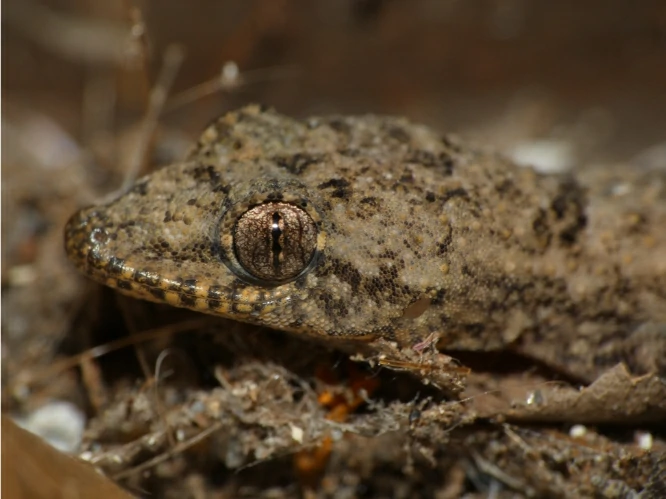If you’ve ever seen a lizard soaking up the sun on a rock or sitting still in a warm patch of light, you might have wondered why they love the sun so much.
It’s almost like sunlight is their coffee, they can’t really function without it. But what’s actually going on? Are lizards really cold-blooded?
Yes, lizards are cold-blooded, which means they rely on the environment (not their own bodies) to control their temperature. They can’t produce steady internal heat like mammals do, so they warm up by basking in the sun and cool down by hiding in the shade or burrowing. Basically, their body temperature changes with their surroundings.
Lizards are really good at using their surroundings to stay alive. In the morning, they crawl out to soak up the sun, and when it gets too hot during the day, they move to cooler spots.
It’s like they’ve learned to borrow heat from nature instead of making it themselves.
What Being Cold-Blooded Really Means
When we say lizards are cold-blooded, it means they are ectothermic. That’s the scientific word for animals that depend on outside heat to control their body temperature.
If you go outside on a cold morning, your body warms you up automatically. You shiver, your blood flow changes, and you stay around the same temperature inside
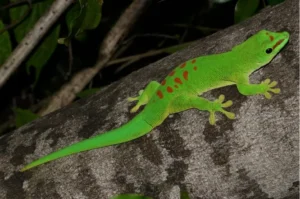
Lizards can’t do that. If it’s cold outside, their body gets cold too, and they slow down. Sometimes they get so slow they can barely move.
On the flip side, if it’s too hot, they can overheat quickly. That’s why you’ll see a lizard dart into the shade after basking. They’re not being shy, they’re keeping their temperature balanced.
How Soaking Up the Sun Powers a Lizard’s Body
When a lizard stretches out in the sun, it’s not just relaxing. It’s literally charging up its body like a solar panel.
Basking warms up their blood, which speeds up their metabolism. That means they can move faster, digest food better, and escape predators more easily.

Once they’re warm, they’re alert, quick, and full of energy.
But too much heat can be dangerous. When rocks or sand get scorching, a lizard might move to the shade of a plant, crawl under a log, or dig a little hole to cool off.
Some desert lizards even lift their feet off the ground one at a time to avoid burning them.
Imagine trying to walk barefoot on hot pavement, that’s what they deal with every day.
How Do Lizards Stay Warm in Cool Weather?
Cold mornings and cool nights can be tough for lizards. Since they can’t make their own heat, they need to find ways to stay warm enough to survive.
Some press their bellies against sun-warmed rocks long after the sun goes down, soaking up every bit of leftover heat. Others burrow into the ground or hide in cracks where it doesn’t get too cold too fast.
In really cold seasons, some lizards go into brumation, which is like hibernation for reptiles. Their heart rate slows, they eat little or nothing, and they stay hidden until it gets warm again.
For example, green anoles in the southern U.S. slow down a lot in winter. They tuck themselves into tree bark or leaf litter and just wait until spring.
Why Being Cold-Blooded Isn’t a Problem
Being cold-blooded might sound like a disadvantage, but it actually helps lizards survive in places where other animals might struggle.
For one, they don’t need to eat as often. Warm-blooded animals burn a lot of energy just staying warm, so they have to eat more. Lizards can get by on less because their bodies aren’t constantly making heat.
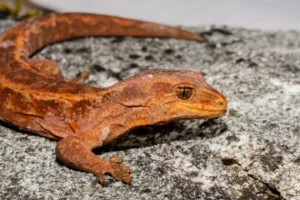
That’s why you’ll see lizards thriving in deserts and scrublands where food can be hard to find. They use heat efficiently and can go longer between meals.
And because they can slow down their metabolism when it’s cold or when food is hard to find, they waste very little energy. It’s a smart tradeoff.
Each Lizard Species Handles Temperature Its Own Way
Not all lizards handle heat the same way. Each species has its own tricks depending on where it lives.
Desert lizards like bearded dragons and horned lizards are great at surviving intense heat. They bask early in the morning, hunt during cooler hours, and disappear underground when the sun is too hot.
Tropical lizards like anoles or geckos don’t deal with cold much, but they still move between sun and shade all day to control their temperature.
Mountain species, like collared lizards, may only be active for short windows when the temperature is just right.
If you’ve ever kept a pet lizard, you know how important this is. That’s why reptile enclosures use heat lamps; they copy the sun, giving the lizard a “hot side” and a “cool side” to move between. Without that, the lizard can’t digest food properly or even stay healthy.
What Happens When Lizards Get Too Cold or Too Hot?
When it gets too cold, a lizard’s body slows down a lot. It might become sluggish, stop eating, or even lose coordination.
In extreme cold, they can’t move at all. That’s why you sometimes see videos of iguanas falling from trees during cold snaps in Florida.
They’re not dead, they’re just too cold to hang on. Once they warm up, most of them start moving again.
For smaller lizards like geckos or skinks, even a short chill can be dangerous. Their tiny bodies lose heat quickly, and if they can’t find a warm spot fast enough, they might not survive the night.
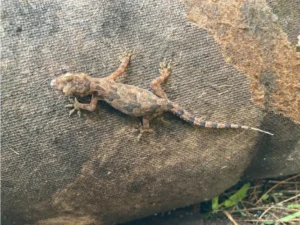
Overheating can be just as dangerous. A lizard left too long in blazing sun without shade can suffer heat stress or even die.
That’s why you’ll see them constantly moving from one spot to another, like tiny living thermometers.
How Lizards Know When to Move, Hide, or Sunbathe
You might think cold-blooded animals wouldn’t know their own temperature, but lizards are very sensitive.
They can feel small changes in warmth through their skin and behavior. Some even change the color of their skin a little to soak up more or less heat.
Darker shades soak up more warmth, while lighter shades reflect it.
For example, a lizard might look darker in the morning to heat up faster, then lighten in the afternoon to avoid getting too hot.
It’s like wearing a black hoodie in the morning and switching to a white T-shirt at noon.
How Do Lizards Survive After the Sun Goes Down?
Night is when being cold-blooded really tests a lizard. Once the sun goes down, their main source of heat is gone.
Many lizards hide in safe spots before nightfall: under rocks, inside tree bark, or in burrows that trap the day’s warmth. Some even share burrows with others to stay warmer.
In tropical areas, nights stay warm enough that this isn’t a big deal. But in deserts or cooler places, nights can get dangerously cold.
That’s why you won’t see many lizards moving after dark. Most of them slow down or stay completely still until sunrise gives them another chance to warm up.
Lizards Are Clever About Staying Alive
It’s easy to think cold-blooded animals are simple, but lizards show how sensitive and adaptable they are.
They’ve survived for millions of years by learning how to balance their temperature. They know exactly how long to bask, when to hide, and how to adjust their behavior minute by minute to stay alive.
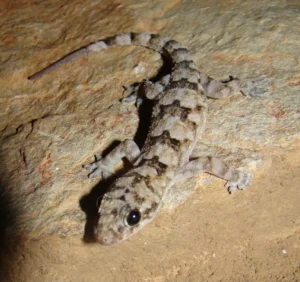
Even though they can’t make their own heat, they’ve figured out how to live comfortably in almost every climate, from tropical forests to rocky deserts.
Some species, like the Australian thorny devil, even collect dew on their skin to stay hydrated. Others, like the sandfish skink, literally swim through hot sand to escape surface heat.
That’s not just survival instinct, that’s smart design.
The Role Cold-Blooded Animals Play in Nature
Cold-blooded animals like lizards play a big role in their environments. Because they don’t need much energy, they can live in tough conditions and still keep the food chain balanced.
They eat insects, control pests, and are food for birds, snakes, and mammals. Without them, entire ecosystems would get thrown off balance.
Their cold-blooded nature also makes them very sensitive to changes in the environment.
When temperatures shift too much from climate change, lizards show it first: slowing down, breeding less, or disappearing from areas they used to thrive in.
Studying how lizards handle temperature helps scientists understand how other animals might cope with a warming planet.
Conclusion
Lizards might not make their own body heat, but they’ve turned that limitation into a survival skill. By relying on sunlight, shade, and smart behavior, they’ve managed to live almost everywhere on Earth.
Yes, lizards are cold-blooded, but they’re also very adaptable. They’ve learned how to live with the sun; warming up when it rises, cooling down when it sets, and thriving in the spaces in between.
Next time you see one on a rock, remember it’s not just relaxing. It’s doing something very important.
For a lizard, warmth isn’t just comfort. It’s survival.
Frequently Asked Questions
Are all lizards cold blooded?
Yes, all lizards are cold-blooded, form the Komodo dragon to the tiny gecko on your wall. That means they can’t make their own body heat and rely on the sun, warm rocks, or the air around them to stay active and move properly.
Do lizards have cold blood?
Not exactly, “cold-blooded” is a bit misleading. Lizards’ blood isn’t frozen or icy; it just changes temperature depending on their surroundings. When it’s chilly, they get sluggish, and when it’s warm, they’re quick and alert.
Hi, my name is Ezra Mushala, i have been interested animals all my life. I am the main author and editor here at snakeinformer.com.

